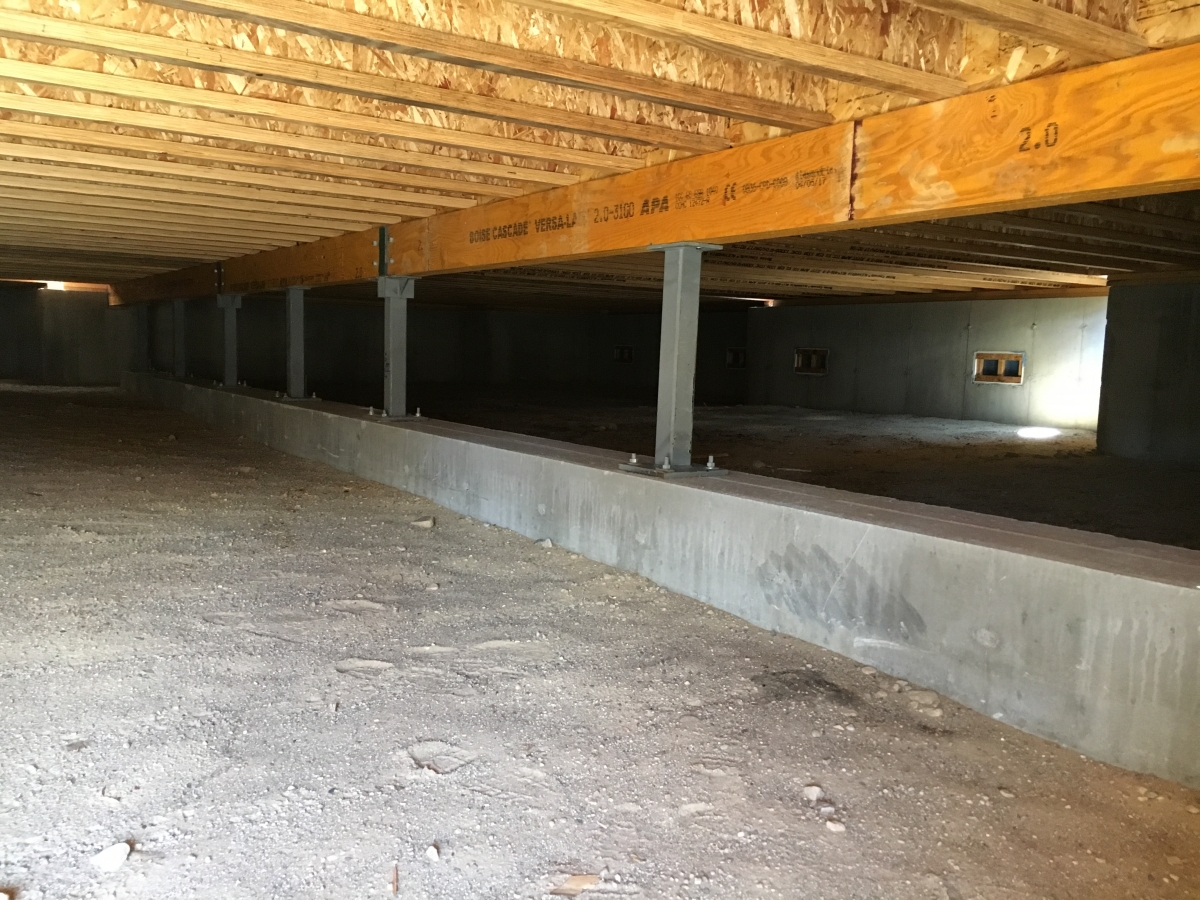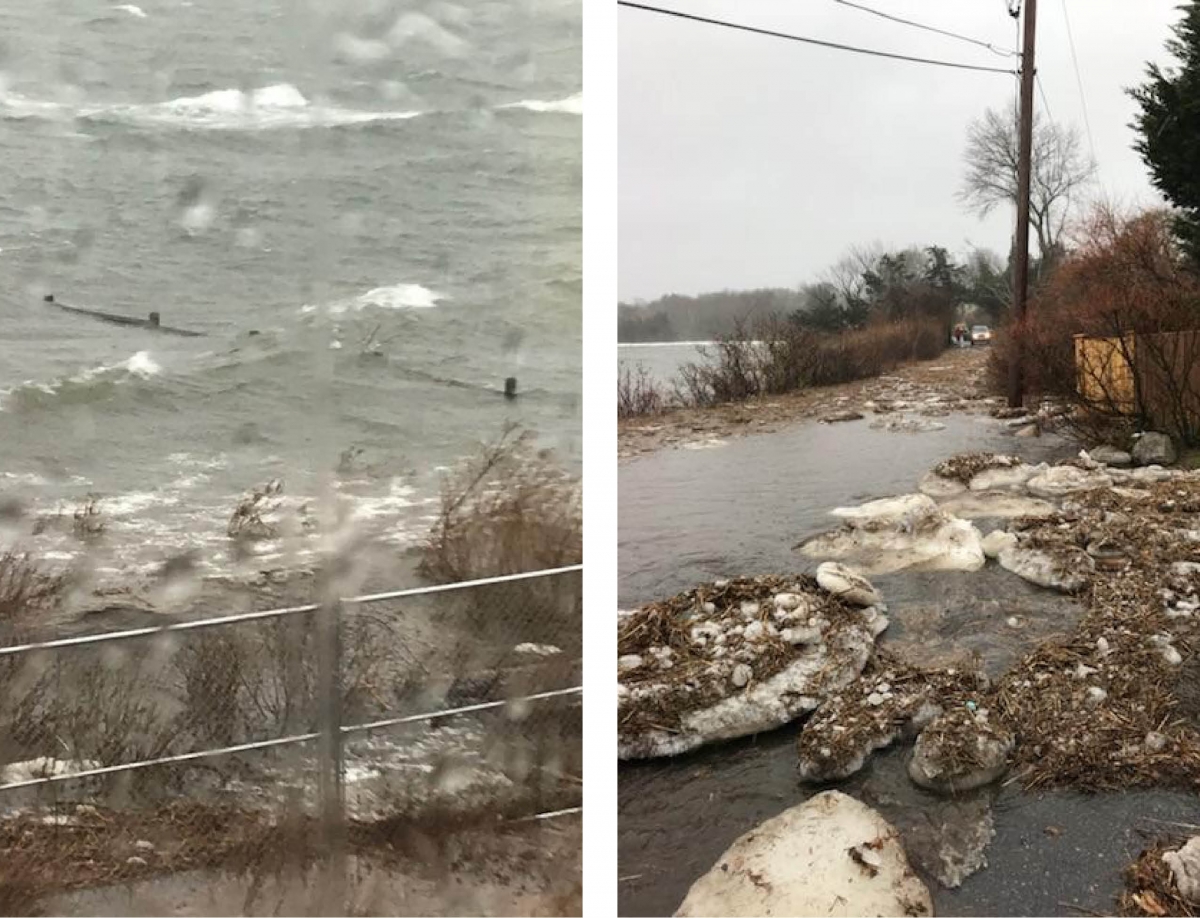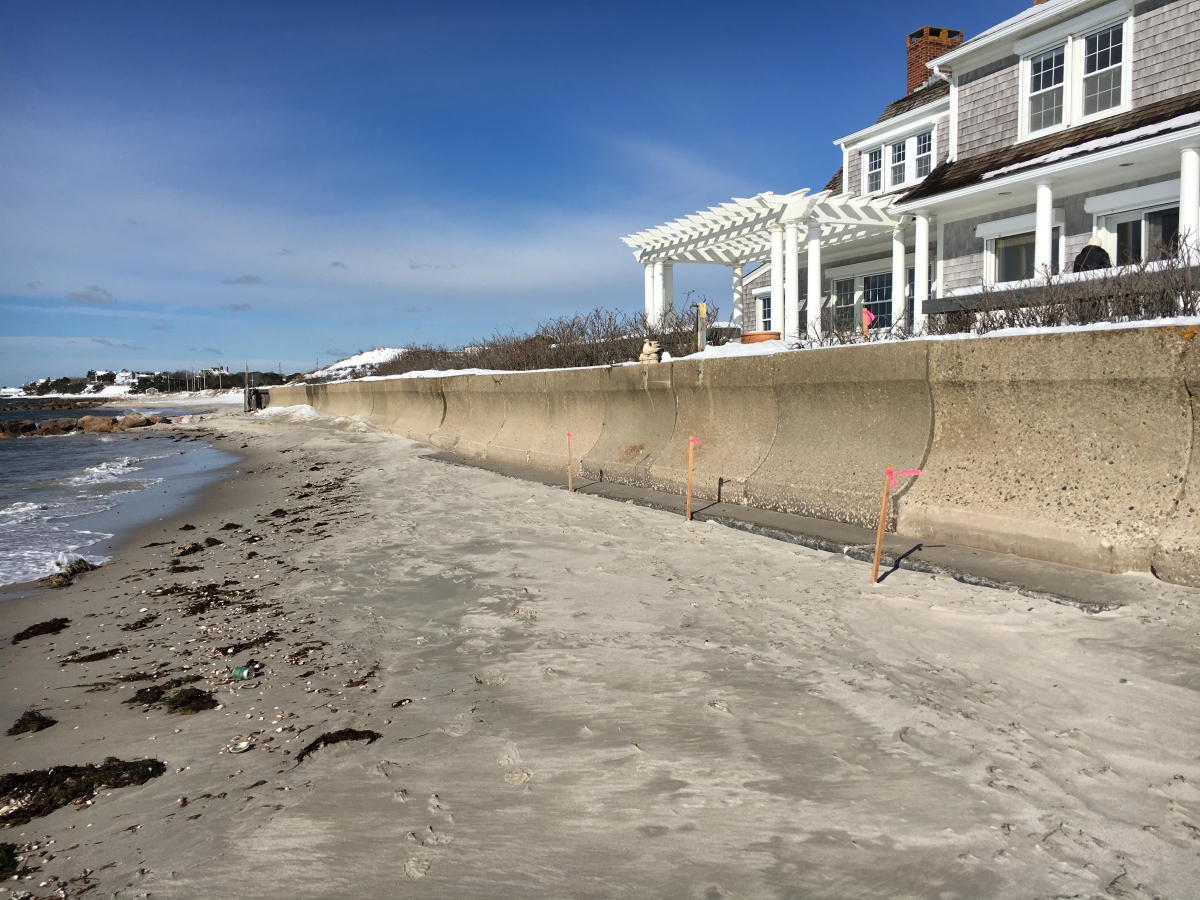Resilient Design for Flooding
Written By: Andy Hinterman
Building codes require us to pay a lot of attention to situations that we hope are unlikely, but like airbags in cars, we want to be sure that safety features are in place during construction, even if we think or hope that the need for them will be rare. This tumultuous winter that New England has been experiencing has both underscored the importance of these regulations and demonstrated how successful they can be at protecting property.

Our Salten Point project is located on the edge of the inlet along Sandy Neck on Cape Cod and its most prominent feature is its proximity to the water and surrounding wetlands. FEMA guidelines dictated the elevation of the home's first floor, the intention being that this height is above the majority of expected high water events in a 100-year period. We don't regard this as punitive in any way; rather it's simply yet another factor to be considered in the design process. The catch to this is that the foundation of the house, being below that elevation, has to be designed and built with the expectation of being flooded several times during the life of the building, while still providing a stable platform for the building to stand on.

We accomplished this by creating openings around the perimeter of the foundation for flood vents which allows water to flow freely in both directions. In the event of bad weather coinciding with a high tide and full moon (a not uncommon occurrence that happened in early January) water might be pushed high enough up the site that it would come in contact with the house. In this case, the flood vents would allow the water into the foundation and the water would then be able to flow out again during the next low tide and the storm passes. It's a scenario that most homeowners don't relish, but it's much preferred than having flood waters build up and flow into your living room!

Two of the recent storms occurred during high tide and with a northeasterly wind that pushed seawater up onto this project site. In one of the storms, water did come into contact with building foundation, but wasn't deep enough to trigger the flood vents (much to our relief!) This can be seen as an endorsement of the FEMA elevation guidelines as the house that previously existed on this property would've been well below the water line during each of those events. Above is a video that was taken from the first "bomb cyclone" storm this year right before high tide hit. Our builder was on site and he took some footage from the second floor of the house.

Water isn't the only concern of course; our project on the south side of Cape Cod endured heavy winds during one recent storm and when things died down we found that the beach had eroded to the point that the footing of the 1935-built sea wall had been exposed. The next round of storms moved more sand onto that beach, but there's still a need to bring in conservation commission-approved sand to fill in the beach and safely cover the wall structure.
Waterfont homes are beautiful for many reasons but their proximity to the water brings in a lot of concerns that need to be addressed, particularly as weather events become more intense. A good design will give a project resiliency and the ability to withstand the weather for decades to come.